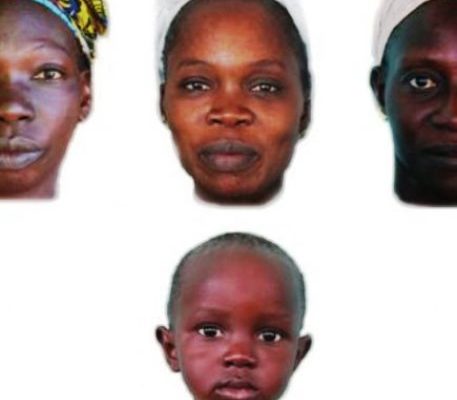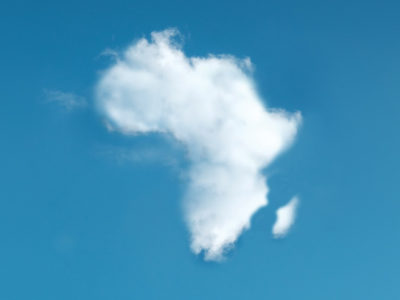“That is the nightmare of every single parent out there,” said Callahan Walsh, a child advocate and executive director for the National Center for Missing and Exploited Children (NCMEC). For any parent, just thinking about losing a child in a busy crowd can feel like the worst nightmare. The heart-wrenching fear, the frantic search, and the overwhelming sense of helplessness are emotions no one should ever have to endure. Children are the very essence of a parent’s world; their safety and well-being form the core of countless hopes and dreams. Still, in places like shopping malls, crowded fairs, and vibrant public events, the unimaginable can happen: a child may go missing.
RELATED: Building trust, protecting voices: how facial recognition transforms the voting experience
However, this scary situation is changing thanks to facial recognition technology. This advanced tool is becoming a vital source of hope for reuniting lost children with their worried parents. A remarkable example of this technology’s potential unfolded in New Delhi, where the police conducted a groundbreaking trial revealing the transformative potential of facial recognition technology in reuniting missing children with their families. They compared around 45,000 pictures of unidentified children with 60,000 records of missing kids. The results were truly impressive: in only four days, the software correctly identified nearly 3,000 lost children, turning sadness into joyous reunions.
This story highlights how impactful facial recognition can be in cases of missing children. It gives us a glimpse into a future where technology ensures that the joyful laughter of children continues to echo in their families’ hearts, even amidst the busiest of crowds.
Transforming Search Efforts
Before modern technology, locating missing children depended on Amber Alerts and time-consuming searches. Amber Alerts necessitated swift action from the community and media involvement. Meanwhile, physical searches often took a long time and were not always effective over large areas. These traditional methods had limitations, including delays and inefficiencies. Facial recognition technology has significantly enhanced the process of locating missing children, providing a faster and more accurate method for tracking them down and addressing the shortcomings of older methods.
This technology uses complex algorithms to analyze and verify individuals based on their facial features. It captures an image of a person’s face and identifies unique characteristics such as eye distance and nose shape. This information is then converted into a digital template, which is compared to a database of known faces. Pattern recognition techniques make accurate identification easier. Modern facial recognition systems can analyze faces with 99.97% accuracy and adapt well because they continuously adjust their algorithms using real-time data. This allows them to remain accurate as conditions change, such as lighting or shifting crowds. These systems seamlessly integrate with existing security networks and collaborate with surveillance cameras for real-time analysis and alerts. They also enhance emergency procedures by automating responses, such as alerting teams or securing areas when a child goes missing. Thanks to advances in technologies like artificial intelligence (AI) and deep learning, these tools keep refining their algorithms with new data, making them more reliable for safely locating missing children.
Bringing Innovation to Everyday Spaces
In shopping centers, facial recognition technology plays an important role in finding lost children. Its real-time surveillance ensures constant monitoring throughout the space. If someone reports a missing child, security teams can use this technology to sift through live feeds and recordings to track where the child has been across stores and common areas. This helps to ensure quick action and boosts the chances of bringing kids home safely.
At carnivals and amusement parks, where large crowds are common, facial recognition technology becomes even more crucial for visitor safety. For instance, during the Rio Carnival, the technology was instrumental in ensuring a secure environment amidst the massive influx of people. The tracking was continuous, so quickly locating any missing child wasn’t a problem. Instead, it helped manage large crowds effectively! By watching entrances and key spots throughout parks, security could respond promptly if anyone went missing while deterring possible threats as well.
During other public events, such as concerts or fairs, facial recognition technology extends its benefits by maintaining safety and order among large groups. The system helps monitor wide areas and large crowds by tracking their movements, which aids in quickly locating individuals who may go missing using live footage analysis. Additionally, these systems can integrate with event management tools, enhancing security measures and improving the overall attendee experiences.
A Beacon of Hope in a Crowded World
The ability to quickly locate missing children through facial recognition brings profound psychological and emotional benefits to families, as prompt reunification significantly reduces the trauma and anxiety experienced by both the child and their parents. Beyond individual families, it fosters a sense of safety and trust within communities by enhancing security measures, leading to increased public confidence.
By enhancing our ability to swiftly locate missing children and proactively prevent such incidents, facial recognition technology not only improves safety but also builds greater security and trust within communities. As we navigate the complexities of bustling public spaces, this technology stands as a beacon of hope, transforming potential nightmares into stories of swift resolution and renewed peace of mind.
“Facial recognition is transforming the way we protect our children in public spaces. It doesn’t just offer a solution; it restores peace of mind to parents by turning moments of fear into swift, joyful reunions, making the safety of our loved ones a priority in every crowded environment.” Said, Oleg Kurochkin, Business Development Director, APAC Region, RecFaces.





























